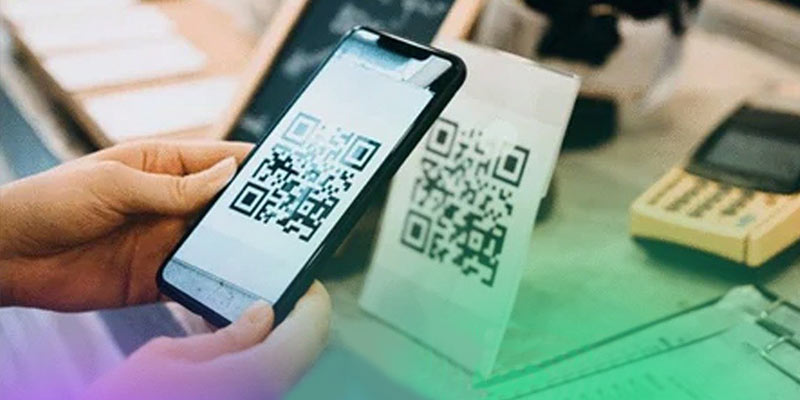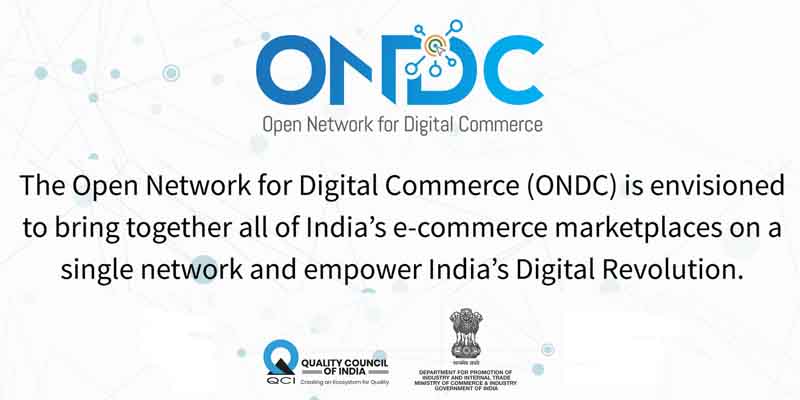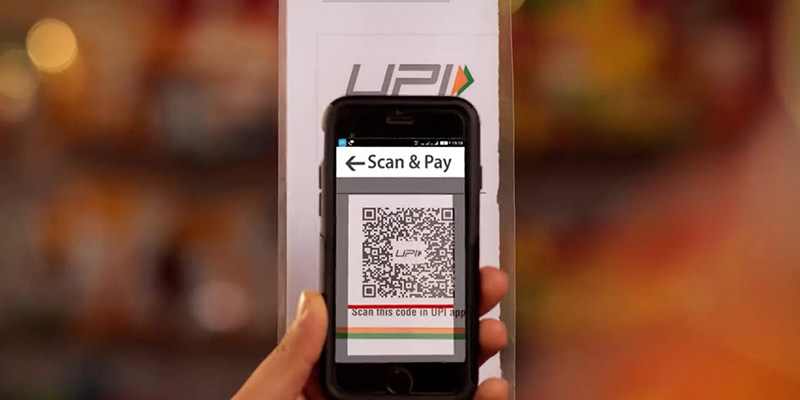- India
- Feb 24
Digital public infrastructure - India’s success story
• The world has moved seamlessly from the focus on physical infrastructure to investing in digital infrastructure.
• Digital public infrastructure (DPI) refers to platforms such as identification, payment and data exchange systems that help countries deliver vital services to their people.
• DPI drives innovation, competition and inclusion, and is governed by enabling rules and relies on a technology layer, governance framework and a multistakeholder ecosystem.
• The COVID-19 pandemic highlighted that DPI is fundamental to well-functioning economies and citizens’ well-being.
• With the thrust on Digital India, the story of digital infrastructure and services in India will always be seen by the world with a certain regard and appreciation.
• In a very short time, the country has seen a great multiplier effect on social and economic growth through the different uses of digital enablement led by the humble mobile phone and the Aadhar number — targeted beneficiary identification for various benefits, provision of health care and education services and financial inclusion.
• Close on this, arrived the success story of India’s Unified Payments Interface (UPI), which travelled internationally with select adoption and global acclaim.
• The bouquet of products like e-RUPI, e-way bill, TReDS for MSMEs, etc have ensured real value for money to consumers while reducing the compliance burden for producers.
• And now, with the vision of $1 trillion digital economy by 2025, the government is marching towards providing more and more e-governance based services, says the Economic Survey 2022-23.
• All of these developments are a testament to the fact that India has been one of the few countries where innovation in technology and digital connectivity has been and continues to be led by the public sector.
• The emergence of DPI, aimed at improving financial literacy, innovation, entrepreneurship, employment generation, and empowering beneficiaries has played a critical role in uplifting the economy and bringing it to the stature where it stands today.
• India has built a competitive digital economy that empowers every individual and business to transact paperless and cashless.
• The journey of DPI has been remarkably memorable, dating to 2009, when Aadhaar was first launched.
Aadhaar - the many achievements of unique identity
• Aadhaar, a 12-digit unique identification number provides a digital identity to the residents of India and ensures authentication. It connects the government and the individual, replacing the disentangled web of multiple IDs for multiple purposes, and secures the social contract between the State and the Citizen.
• It is because of the initiative taken in 2009 that today, the nation is consistently building and strengthening a digital economy which will ultimately give a global competitive advantage in how money and goods move around the country over its competitors.
• Over 135 crore Aadhaar numbers have been issued till November 2022.
• Aadhaar is an essential tool for social delivery by the State. As many as 318 central schemes and over 720 state DBT schemes are notified under section 7 of the Aadhaar Act, 2016, and all these schemes use Aadhaar for targeted delivery of financial services, subsidies, and benefits.
The key usages of Aadhaar in the daily lives of citizens are:
i) Aadhaar – Usage in DBT: When linked with a bank account, an Aadhaar becomes the ‘Financial Address’ of an individual, which helps to accomplish the country’s goal of financial inclusion. The number is sufficient to transfer any payment to an individual’s bank account through Aadhaar Payment Bridge (APB), thus eliminating the need to give other details — the bank account, IFSC Code, and bank branch details to the government/institutions.
ii) Aadhaar Enabled Payment Systems (AEPS): AEPS helps an individual to do basic banking transactions like withdrawal, cash deposit, transfer of funds from his bank account, etc, by simply using his Aadhaar. This has immensely facilitated providing door-step banking services and helped mitigate the hardships of the people due to COVID-19 pandemic.
iii) JAM (Jan-Dhan, Aadhaar, and Mobile) trinity, combined with the power of DBT, has brought the marginalised sections of society into the formal financial system, revolutionising the path of transparent and accountable governance by empowering the people. Till November 2022, multiple large central schemes, including PAHAL, MGNREGS, etc, have paid over Rs 7,66,055.9 crore through over 1,010 crore successful transactions.
iv) One Nation One Ration Card (ONORC) Scheme: Aadhaar has played a key role in the implementation of the ONORC Scheme. While Aadhaar seeding of the PDS database has resulted in significant savings due to eliminating ghost and duplicate beneficiaries. Grain disbursal through Aadhaar-based Biometric Authentication has brought meaningful transparency and back-office improvement of the logistic network of PDS. Free distribution of food grains under ‘Pradhan Mantri Garib Kalyan Yojana’ (PMGKY) has greatly mitigated the pandemic’s impact, especially for the weakest and most vulnerable sections of society.
v) PM Kisan Samman Nidhi: Aadhaar platform forms the backbone for the implementation of this scheme, right from registration through Aadhaar eKYC to DBT through the APB.
vi) Co-WIN: Aadhaar played a vital role in developing the Co-WIN platform and in the transparent administration of over 2 billion vaccine doses.
vii) Face Authentication: The use of face as an additional modality of authentication is increasing. This has helped, especially the elderly, to get ‘Jeevan Praman’ through their smartphones to avail of pension.
myScheme - an e-Marketplace for schemes
• With Aadhaar establishing the authentication framework for verifying the identity of beneficiaries of welfare schemes, the next logical step was to make major government services available digitally. However, a lack of knowledge about the existing schemes was seen as a primary reason behind the beneficiaries’ inability to access the schemes’ benefits.
• ‘myScheme’ is an e-Marketplace for schemes where users can look for suitable schemes based on their eligibility. It helps reduce users' time and effort by doing away with the requirement of searching multiple websites of government departments and studying multiple scheme guidelines to check their eligibility.
• The scheme also acts as the single national platform for launching any government scheme. As on January 16, 2023, more than 181 central and state/UT government schemes across 14 diverse categories have been hosted on the portal.
UMANG
• To reduce the search cost for the commoners, the government launched Unified Mobile Application for New-Age Governance (UMANG), which enables citizens to access e-government services offered by central and state government in various sectors such as agriculture, education, health, housing, employees, pensioners, and students’ welfare, the Public Distribution System, and others.
• Until January 16, 2023, UMANG catered to about 21,869 services (1,672 central and state government services and 20197 Bill Payment services) under 310+ departments of central government and departments of 34 states/UTs.
• Over 4.9 crore users are registered and benefiting from services on UMANG. As many as 489 Direct Benefit Transfer (DBT) schemes were made live on UMANG until September 2022.
• During the trying times of COVID-19, UMANG was instrumental in making available the services of EPFO for claims related to COVID-19. Around 4.9 lakh advance claims in EPFO have been raised via the UMANG Platform until September 2022.
• These initiatives were focused on bringing the government to the doorsteps of the citizens.
Open Network for Digital Commerce (ONDC)
• ONDC aims to go beyond the current platform-centric digital commerce model where the buyer and seller can use the same platform or application for transactions. ONDC is a network-based open protocol that would connect all the buyers and sellers on the network thus bringing better visibility across the Business-to-Consumer (B2C) & Business-to-Business (B2B) landscape.
• In the ONDC framework, consumers can potentially discover any seller, product, or service by using any compatible application or platform. This will increase the freedom of choice for the consumers and will enable them to match demand with the nearest available supply, allowing them to choose their preferred local businesses.
• ONDC’s beta test in the city of Bengaluru is a major first step in operationalising a network approach to e-commerce as an alternative to a platform-centric approach. The open network system will make the e-commerce landscape more inclusive, accessible, and experience-driven for all consumers and sellers, especially for small businesses that will exercise more freedom in business decision-making.
OpenForge
The government is cognizant of the need to improve the productivity of human capital. In order to promote open collaborative software development of e-governance applications, a platform called OpenForge has been developed. Through OpenForge, the use of open-source software and sharing and reuse of e-governance-related source code is promoted. As on January 16, 2023, there are 10,328 users on the platform, with 2,205 projects.
Open resources on Artificial Intelligence
• Another important domain that the government has emphasised is the availability of open resources on Artificial Intelligence (AI). The national AI portal has been developed with a view to strengthening the AI ecosystem in the country by pooling together and highlighting the latest developments happening in central and state governments, industry, academia, NGOs, and civil societies.
• In a country such as India, with its unmatched linguistic and cultural diversity, AI has great potential as a tool for overcoming the language barrier. ‘Bhashini’, the national language translation mission, aiming at nurturing Indian language technologies and solutions as a public good, was launched in July 2022.
• The Digital India Bhashini portal is a public digital platform on which 260 open-source API-based AI models are available for speech-to-text conversion, machine translation, and text-to-speech conversion in 11 Indian languages and English for various purposes. Bhashini has great potential to bring access to the Internet and other digital resources to millions of Indians in their own languages.
Unified Payments Interface
• Unified Payments Interface (UPI) is a system that empowers and knits multiple bank accounts into a single mobile application (of any participating bank), merging several banking features, seamless fund routing and merchant payments into one hood. It also caters to the “peer to peer” collection request, which can be scheduled and paid as per requirement and convenience.
• Introduced in 2016 to revolutionize the payment landscape through universal operability, single payment address, and low-cost mobile-first payment system, UPI has acted as a positive disruption towards enabling greater digital payments adoption in the country.
• The journey of UPI has been fascinating. The number of banks that became part of the real-time payment system increased from 35 in December 2017 to more than 380 in December 2022. Though pre-existing payment modes such as debit cards, credit cards, National Electronic Funds Transfer (NEFT) and Real-Time Gross Settlement (RTGS) have grown over time, UPI has shown a quantum jump comparatively to become one of the preferred modes of payment.
• In FY19, UPI accounted for 17 per cent of the country's total 3,100 crore digital transactions. The next fiscal year saw UPI’s share rise to more than 27 per cent as it processed 1,250 crore transactions out of 4,600 crore digital transactions. In FY22, UPI accounted for 52 per cent of the total 8,840 crore financial digital transactions.
• The success of UPI has not been restricted to India alone. National Payments Corporation of India (NPCI), through its international arm NPCIL is pushing for acceptance of RuPay/UPI powered apps, cross-border remittance and UPI-Like deployment in international markets such as Singapore, UAE, France, the Netherlands among others.
• Initiative towards the discussion on cross-border remittances will help reduce the cost incurred and procedures involved towards money transfer at present by the migrant workers. The smooth transfer of money will increase the total value of remittances, increasing their impact on economic development.
• Tech companies are increasingly leveraging the power of UPI to expand the digital ecosystem, which has led to a significant acceleration in the pace of financial inclusion. UPI has opened up many opportunities for startups and e-commerce players to develop innovative solutions that elevate the customer experience.
• It is envisioned that the journey of UPI will help accelerate the process of financial inclusion and digital adoption in India by creating a more prosperous and inclusive ecosystem that can accommodate larger sections of the population in times to come.
India’s success story
• Today, we have a powerful story on digital public infrastructure that is finding global resonance. The increasing digital adoption during the pandemic in areas like health care, agriculture, FinTech, education, and skilling indicates that the digital delivery of services in India has a massive potential across economic sectors.
• It is usually suggested that developing countries must follow global best practices. However, how India has created and harnessed its DPI is capturing the attention of many nations globally.
• Low-cost accessibility (Aadhaar), the success of citizen-centric services like Unified Payments Interface (UPI), large-scale adoption and reach (DigiLocker, MyGov), and the vaccine journey through Co-Win are important and successful milestones in India’s public digital infrastructure journey.
Manorama Yearbook app is now available on Google Play Store and iOS App Store





